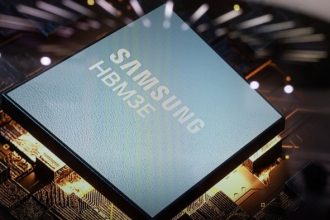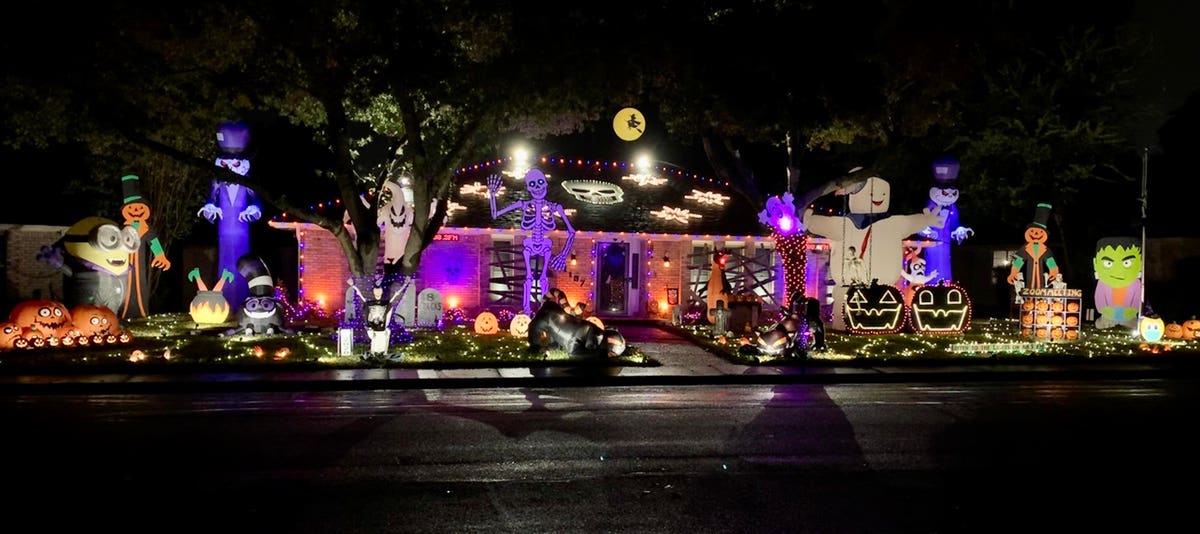Can a 12-foot skeleton be bested by a fun-sized candy bar? Thanks to shrinkflation, it may.
Yes, Home Depot’s giant lawn ornament, nicknamed Skelly, sold out in July for the fourth consecutive year that the retailer offered the early release. But this year, the epically successful Halloween decoration is facing off against epically stubborn inflation that is shrinking candy value.
True, those willing to shell out $299 for Skelly might not think twice about dropping $5 on a 10.5 ounce bag of mini Reese’s peanut butter cups. But for retailers, the point isn’t whether their customers must choose between outsized lawn ornaments or tiny-sized candy. It’s that size matters.
And the size of Halloween is on the bubble. According to a Halloween trends report by Power Reviews, 34% of consumers plan to skip buying any Halloween decorations this year, and an equal share said they will buy cheaper candy (sorry, kids). Nearly 90% of consumers said they’re willing to buy candy through a brand or vendor they’ve never tried.
If shoppers are switching retailers for their beloved Kit Kats and Reese’s (or skipping them, perish the thought), then it might be time to right-size Halloween.
Wrapping Retail’s Arms Around Spending Limits
Consumers will adapt only so much to stubbornly high prices, regardless of big “Yay for Halloween!” displays. In 2022, the price of groceries rose 11.4%, on top of a 3.5% gain in 2021, Bon Appétit has reported. In the 12 months that ended in June, prices rose an additional 4%.
Other than the CEOs of supermarket chains, most people’s paychecks did not see the same gains.
So, shoppers are making choices. Kit Kats or Dum Dums, grocery store or dollar store. Here’s how retailers can size down the issue.
- Use online sales as store bait. Home Depot’s Skelly has sold out online three times this year, according to Business Insider, and it won’t be restocked online again until 2024. If consumers want one, they will have to go to a physical Home Depot location to nab it. It’s a smart move by Home Depot, as a trip to the big-box store rarely results in one purchase. The average customer transaction at Home Depot in the second fiscal quarter of 2023 was $90, CNBC reports. Every Skelly-seeking shopper will therefore likely leave with something else – gallons of paint, leaf bags or end table lamps.
- Stop lying about your size. Price is the number one factor among 65% of shoppers when deciding on Halloween candy, according to the Power Reviews report. And they’re not just looking at total cost; more shoppers are getting wise to changes in packaging and size that reduce size but not price. Some people are documenting product shrinkage – deeper dents in the bottoms of bottles, thinner chocolate coatings on ice cream bars and slightly smaller bags of fun-size candies, and sharing their findings on outlets such as TikTok. Home Depot, meanwhile, hasn’t raised the price of Skelly since 2000, and he still sells out.
- Consider shrinking the season. Before the Covid pandemic, Halloween was a six-week season, Candy Retailer reports. Since then, the retail holiday period has extended to eight to 10 weeks, even 12 weeks. Bags of Halloween candy were marked on sale in some stores in August, for $4 a (slightly smaller) bag. Home Depot launched a surprise restock of Skelly this year in April, six months before Halloween. These extended offerings might persuade some people to buy candy or decorations earlier, but it also risks diminishing the appeal. Pumpkin Reese’s are just less special after three months.
- Blow up the house price. Customers are more likely to trust retailers that enlarge the fine print about a product’s unit price (the price per ounce, for example) and make it plain to see from the aisle. We’re talking words that are big enough to be distinguished from a foot away, for all the shoppers who have trouble reading the fine print below the price. Consumers who understand such displays save up to 18%, research has shown. If making such signage is too big an undertaking (some stores do have thousands of stock-keeping units), retailers can shout out the better value-per-ounce of their own in-house brands.
- Value the big easy shopping trip. Retailers shouldn’t forget that for many shoppers, convenience is calculated into price. In 2022, the peak of price inflation, 70% of consumers said they would pay more for something if they knew the experience would be convenient, according to a report in Forbes. Ergo, if Halloween customers know they can get in and out of one store faster than another, they will likely choose that store, even if the candy is slightly more money. Halloween displays near the door and staffed cash registers can help accomplish this.
- Offer rewards in bulk. As Halloween approaches, retailers can start offering loyalty program deals that encourage combo purchases. Members can become eligible for discounts on multiple bags of candy, for example, or receive December holiday coupons if they combine Halloween decorations and candy purchases in one trip. Retailers might find their loyalty members are even more receptive to such purchases if they have the option of cash back. A 2023 report by Bankrate shows that 55% of consumers who redeemed credit card rewards opted for cash back or gift cards.
Even A 12-Foot Skeleton Can Show Restraint
Retailers and brands might say “boo” to the idea of scaling Halloween back to less than three months, but perhaps they should consider the cost. How much do the added sales from decorations and candy corn offset the cost of fulfillment, promotions and displays? If piles of Halloween candy are lingering on Oct. 24, does it get marked down sooner?
And what about more crowded aisles? Customer perceptions matter.
If retailers want to scare more sales out of the Halloween season, they should seek more creative ways. Reward programs, apps and other tech provide opportunities to alert select customers to seasonal offers that are relevant, without burying everyone under the hype.
Even Home Depot knows when to put Skelly back in the box.
Read the full article here





